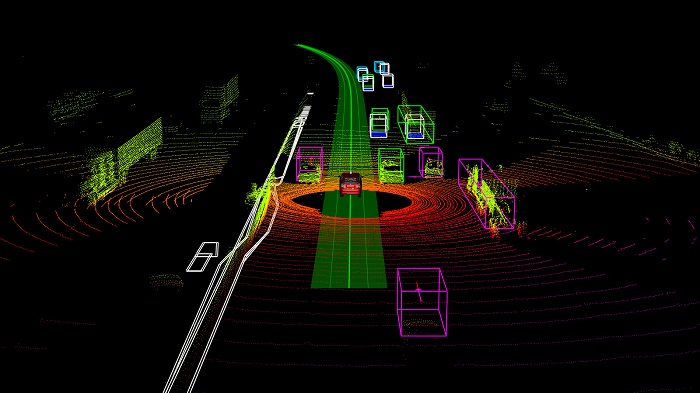The auto industry is very interested in a purely solid-state lidar technology that can be easily hidden somewhere within the car (perhaps behind the grill). That’s because the technology can be used for things such as emergency stopping and other related functions due to its ability to react faster than a human.
Unfortunately, though, current lidar technology is very expensive to produce, extremely power-hungry, and wears super-fast.
At least, that was the case. Reports out of Osram Opto Semiconductors indicate the company has developed a solid-state solution that can be easily implemented anywhere on the vehicle for a fraction of the cost of current systems; it’s also much more responsive.

In a recently published press release, the company says it will have test samples available in 2017 and commercial models by 2018. Should manufacturing scale up, the price of the technology will likely fall somewhere around the $40−45 range.
To put the latter point into perspective, Velodyne’s rooftop Lidar towers run about $70,000 (and more); its new, smaller model is approximately $8,000.
The key to Osram’s success lies in the design — it features a laser chip with four diodes made using a single piece before being separated. So, that means they’re all perfectly aligned with one another, no fiddling around required. Each channel activates in sequence, so the returning signal can be matched to its source — this, in turn, allows the system to add each piece of angular scope into an ensemble that is able to view a large vertical swath.

Also part of the design is a super small array of mirrors that steer the laser beam. Innoluce, Osram’s partner, is responsible for this particular aspect of the technology. The actual mirrors are part of a microelectromechanical system, so they move on a very tiny scale. The chip is able to operate at up to 2 kilohertz, whereupon it can then scan the local environment to acquire the data the vehicle needs in order to perform 3D mapping.
Each of the four lasers pulse for 5 nanoseconds — this is one-quarter as long as the one-channel laser the company currently makes for emerge stopping purposes. Since the lasers fire off so quickly, the system reaches peak power pretty quickly before flashing off; that being the case, it can support a peak power of 85 watts while shining for just 0.01% of the time. This makes it non-dangerous to nearby pedestrians (specifically, dangerous to the eyes).
The system covers 120 degrees in the horizontal plane, with 0.1 degree of resolution, and 20 degrees in the vertical plane, with .5 degree of resolution. In the light of day, it’s estimated to be able to detect a car from at least 200 meters away and pedestrians from 70 meters away.
The company admits it was able to achieve such short, powerful pulses thanks to the decision to integrate a partner’s driver chip and include a capacitor in the package. This allowed the system to keep the distance between the parts short, so there’s little to no inductance.
To learn more, read the press release in full.
Advertisement
Learn more about Electronic Products Magazine





